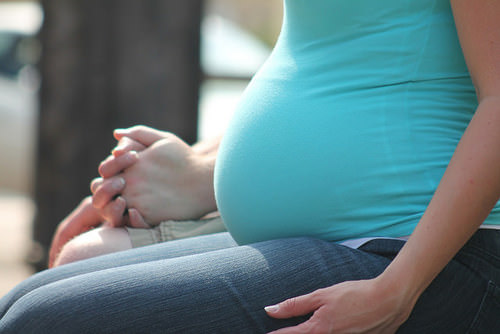1.1 案例研究:为什么你应该学习科学?
章节大纲
-
Case Study: To Give a Shot or Not
::案例研究:是否开枪射击Samantha and Dave are expecting their first child. They are excited for the baby to arrive, but they are nervous, too. Will the baby be healthy? Will they be good parents? It seems like there are a million decisions to make. Will Samantha breastfeed or will they use formula? Will they buy a crib or let the baby sleep in their bed?
::萨曼莎和戴夫在等他们的第一个孩子。他们为孩子的到来而兴奋,但他们也很紧张。孩子健康吗?他们是好父母吗?似乎有上百万个决定要做。萨曼莎会吃母乳呢?还是他们会用配方?是他们买婴儿床呢?还是他们让婴儿睡在床上呢?Samantha goes online to try to find some answers. She finds a website by an author who writes books about parenting. On this site, she reads an article that argues that children should not be given many standard childhood vaccines, including the measles, mumps, and rubella (MMR) vaccine.
::Samantha上网寻找答案。她找到了一位写了有关育儿的书的作者的网站。她在这个网站上读到一篇文章,其中指出不应该给儿童许多标准的童年疫苗,包括麻疹、腮腺炎和风疹疫苗。The article claims that the MMR vaccine has been proven to cause autism. It gives examples of three children who came down with autism-like symptoms shortly after their first MMR vaccination at one year of age. The author believes that the recent increase in the incidence of children diagnosed with autism-spectrum disorders is due to the fact that childhood vaccinations have also increased.
::该条声称,MMR疫苗已证明造成自闭症,举例说,有三名儿童在一岁时首次接受MMR疫苗接种后不久就患有类似自闭症的症状,提交人认为,最近诊断出自闭症谱系障碍儿童发病率上升的原因是,儿童接种疫苗也有所增加。Samantha is concerned. She does not want to create lifelong challenges for her child by increasing his risk of autism. Besides, aren’t diseases like measles, mumps, and rubella basically eradicated by now? Why should she endanger the health of her baby by injecting him with vaccines for diseases that are a thing of the past?
::萨曼莎担心萨曼莎。 她不想通过增加自闭症的风险给孩子带来终生挑战。 此外,麻疹、腮腺炎和风疹等疾病现在是否基本根除了? 她为什么要用疫苗注射给婴儿治疗过去遗留的疾病,从而危及婴儿的健康?Once baby James is born, Samantha brings him to the pediatrician’s office. Dr. Rodriguez says James needs some shots. Samantha is reluctant and shares what she read online. Dr. Rodriguez assures Samantha that the study that originally claimed a link between the MMR vaccine and autism has been found to be fraudulent, and that vaccines have repeatedly been demonstrated safe and effective in peer-reviewed studies.
::詹姆斯出生后,萨曼莎就把他带到儿科医生的办公室。 罗德里格斯博士说詹姆斯需要一些照片。 萨曼莎不愿意,并分享她在网上读到的东西。 罗德里格斯博士向萨曼莎保证,最初声称MMMR疫苗和自闭症之间有联系的研究被发现是欺诈性的,而且疫苗在同行评审研究中一再被证明是安全有效的。Although Samantha trusts her doctor, she is not fully convinced. What about the increase in the number of children with autism and the cases where symptoms of autism appeared after MMR vaccination?
::尽管萨曼莎信任她的医生,但她并不完全相信。 患有自闭症的儿童人数的增加以及自闭症症状在MMR疫苗接种后出现的案例呢?Samantha has a tough decision to make, but a better understanding of science can help her. In this chapter, you will learn about what science is (and what it is not), how it works, and how it relates to human health. At the end of this chapter, you will learn how Samantha uses scientific evidence and reasoning to help her decide whether she should vaccinate her baby.
::萨曼莎做出了艰难的决定,但更好地了解科学可以帮助她。 在本章中,你将了解科学是什么(和不是什么 ) , 如何运作,以及它与人类健康的关系。 在本章结尾,你将了解萨曼莎如何利用科学证据和推理来帮助她决定是否应该给婴儿接种疫苗。Chapter Overview: The Nature and Process of Science
::第一章 概述:科学的性质和过程In this chapter, you will learn about the nature and process of science. Specifically, you will learn about:
::在本章中,你们将了解科学的性质和过程。具体地说,你们将了解:-
What science is and the types of questions it can answer
::科学是什么 科学可以回答的问题类型 -
How scientific knowledge advances through systematic and repeated experimentation and testing
::科学知识如何通过系统和反复的试验和试验取得进步 -
How scientific ideas are open to revision, although sound scientific ideas can withstand repeated testing
::科学思想如何接受修改,尽管健全的科学思想能够经受反复试验 -
What a scientific theory is and how it differs from common usage of the word “theory”
::科学理论是什么,它与“理论”一词的常用用法有何不同。 -
Examples of scientific breakthroughs in biology, including the development of the first vaccines, Mendel’s laws of inheritance, and the germ theory of disease
::生物学科学突破的例子,包括研制第一批疫苗、孟德尔的继承法和病菌理论 -
The scientific method, how it is used to answer scientific questions, and how it is often a nonlinear and iterative process
::科学方法,如何使用科学方法回答科学问题,以及它如何经常是一个非线性和迭接性过程 -
How scientific experiments are designed and carried out, including
the use of
controls,
the manipulation of
variables to test the effects on
other
variables, and ways to minimize sources of error
::如何设计和进行科学试验,包括使用控制、操纵变量以测试对其他变量的影响,以及如何尽量减少误差源 -
Types of non-experimental scientific research, such as observational studies, that are often used to study human health in situations where experimentation would be unethical
::经常用于在实验不道德的情况下研究人类健康的非实验性科学研究类型,如观察研究等。 -
Characteristics of pseudoscience, which is defined as a claim, belief, or practice that is presented as scientific but does not adhere to scientific standards and methods
::伪科学的特征,它被界定为一种主张、信仰或做法,作为科学的表述,但不遵守科学标准和方法 -
The ethical challenges of research on human subjects, unethical human research studies performed in the past such as the Tuskegee syphilis study, and current legislation and guidelines in place to protect the rights of human subjects (such as informed consent)
::研究人类课题、过去进行的不道德的人类研究,如Tuskegee梅毒研究,以及为保护人类课题(如知情同意)的权利而实施的现行立法和准则等伦理挑战
As you read this chapter, think about the following questions:
::当你读到本章时,请考虑以下问题:-
How
do you think the quality of
Samantha’s online source of information about vaccines compares to Dr. Rodriguez’s sources?
::萨曼莎有关疫苗的线上信息来源的质量如何与罗德里格斯博士的信息来源相比? -
Do you think the arguments presented here that claim that the MMR vaccine causes autism are scientifically valid? Could there be alternative explanations for the observations?
::你是否认为这里提出的声称MMR疫苗导致自闭症的论点在科学上是有效的? 观察结果是否有其他解释? -
Why do you think diseases like measles, polio, and
mumps
are rare these days? Why are we still vaccinating for these diseases?
::为什么你认为麻疹、脊髓灰质炎和流行性腮腺炎等疾病现在很少见? 为什么我们还在为这些疾病接种疫苗?
-
What science is and the types of questions it can answer
